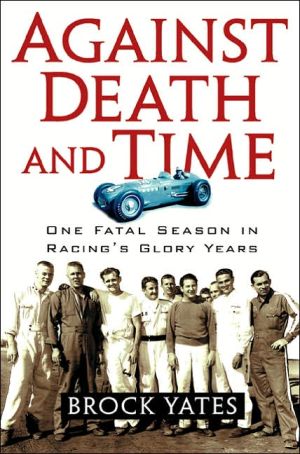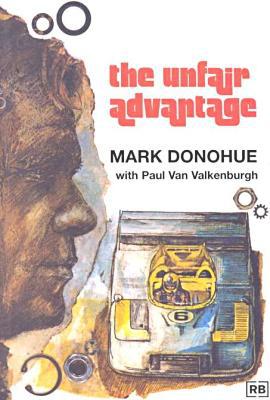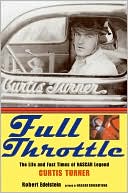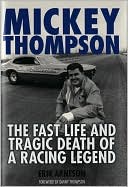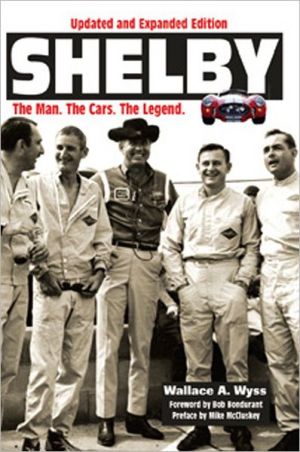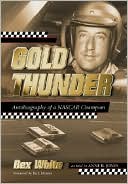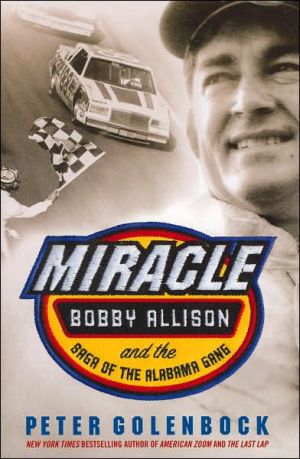Against Death and Time: One Fatal Season in Racing's Glory Years
Against Death and Time chronicles one fatal season in the post-war glory years of racecar driving. It is the story of the dispossessed young men who raced for "the sheer unvarnished hell of it." Yates has been writing for Car and Driver for more than thirty years and is one of the best-known people in the racing world. He raced his own car for a season in a Plimpton-like adventure recorded in one of his six books, Sunday Driver. He has published widely, from Playboy to the Wall Street...
Search in google:
Against Death and Time chronicles one fatal season in the post-war glory years of racecar driving. It is the story of the dispossessed young men who raced for “the sheer unvarnished hell of it.” Yates has been writing for Car and Driver for more than thirty years and is one of the best-known people in the racing world. He raced his own car for a season in a Plimpton-like adventure recorded in one of his six books, Sunday Driver. He has published widely, from Playboy to the Wall Street Journal, and has appeared on every major television network as a racing and automotive industry commentator. Brock integrates unexpected and fascinating detail into this character-driven story of men compelled to compete against themselves, time, and death. His strategy of a fictional narrator observing, interrogating, and reporting on Brock's real-life protagonists imparts the immediacy of fiction to this minutely accurate account. The book is based on Yates's incomparable experience and interviews with dozens of surviving racers, widows, car owners, mechanics, and historians, and his deep research in the archives of the Speedway, the Detroit Public Library Auto Archive, United States Auto Club, Henry Ford Museum, Smithsonian Institute, and contemporary newspapers and periodicals. Publishers Weekly In this engaging history, racing journalist Yates narrates one of professional sports car racing's worst years, 1955. In a time before fairly rigorous safety standards for racing cars-roll bars were just coming into use, there were no seat belts but primitive safety harnesses-and no safety standards for racing tracks, race car drivers raced for the thrill of speed with a gritty competitive spirit unparalleled in today's sport. Yates, editor-at-large for Car and Driver magazine, chronicles the colorful cast of characters who filled the straightaways and hairpin turns of tracks from the Indy 500 to Le Mans by creating a fictional persona who interviews each of the racers, has an affair with a racetrack groupie, and who even drives fast with reckless abandon. For part of the book he follows the career of Bill Vukovich, the "Mad Russian," whose tenacity and determination led him to two straight Indy wins before his fiery death there in 1955. Vukovich's death begins a season of carnage at tracks around the world, including the deaths of over 100 spectators at Le Mans when several cars crashed, throwing steel and tire debris into the crowd. As a result of the 1955 season, the racing profession instituted more and more safety regulations for drivers, cars and tracks, so that today's races are pale imitations of the roaring, bone-throttling, and often deadly races of the 1950s. While some will object to Yates's strategy of using a fictional narrator to tell these stories, his own research doesn't falter, and race fans will be pleased with his exciting history of the sport's past. (July) Copyright 2004 Reed Business Information.
\ Publishers WeeklyIn this engaging history, racing journalist Yates narrates one of professional sports car racing's worst years, 1955. In a time before fairly rigorous safety standards for racing cars-roll bars were just coming into use, there were no seat belts but primitive safety harnesses-and no safety standards for racing tracks, race car drivers raced for the thrill of speed with a gritty competitive spirit unparalleled in today's sport. Yates, editor-at-large for Car and Driver magazine, chronicles the colorful cast of characters who filled the straightaways and hairpin turns of tracks from the Indy 500 to Le Mans by creating a fictional persona who interviews each of the racers, has an affair with a racetrack groupie, and who even drives fast with reckless abandon. For part of the book he follows the career of Bill Vukovich, the "Mad Russian," whose tenacity and determination led him to two straight Indy wins before his fiery death there in 1955. Vukovich's death begins a season of carnage at tracks around the world, including the deaths of over 100 spectators at Le Mans when several cars crashed, throwing steel and tire debris into the crowd. As a result of the 1955 season, the racing profession instituted more and more safety regulations for drivers, cars and tracks, so that today's races are pale imitations of the roaring, bone-throttling, and often deadly races of the 1950s. While some will object to Yates's strategy of using a fictional narrator to tell these stories, his own research doesn't falter, and race fans will be pleased with his exciting history of the sport's past. (July) Copyright 2004 Reed Business Information.\ \ \ \ \ Library JournalA veteran columnist at Car & Driver magazine, Yates relives 1955 in automotive racing a year in which crashes cost many lives of both drivers and spectators and nearly ended the sport. Assuming the role of a fictional narrator, he reminds us of plain-spoken heroism and the fragility of life via portraits of the various drivers that season. Yates interviewed dozens of surviving race drivers, widows, car owners, mechanics, and historians to develop his story. As it unfolds, we learn that the young drivers who rose to the top of the sport weren't so much reckless as fearless. Willing to drive at the ragged edge of control literally for the sheer hell of it, they possessed an uncanny ability to compartmentalize whatever fears they might have and superhuman concentration on the task at hand. While the narrator device has been misused in the history genre, Yates is able to weave himself seamlessly into the narrative without affecting its outcome or unduly misrepresenting the major players. The result is much more readable than a dry recounting of the facts and brings the sights, sounds, and smells of the racetrack into full relief. This work serves to remind readers of both the good and the bad of racing and why people are compelled to compete at such a high risk when the rewards are often few. Highly recommended for all sports collections. Eric C. Shoaf, Brown Univ. Lib., Providence Copyright 2004 Reed Business Information.\ \
